U.S. military

THERE IS A DISTURBING sense of déjà vu in the Philippines. Thirty-seven years after the nonviolent People Power movement ended the brutal and kleptocratic 20-year reign of Ferdinand Marcos Sr., his only son and namesake sits comfortably in the presidential palace. Following in his father’s footsteps, President Ferdinand “Bongbong” Marcos Jr. is once again cozying up to the United States.
In 2012, the Obama administration began to “rebalance” U.S. military and trade agreements in Asia. Since 2014, the U.S. has had access to five military bases in the Philippines and trains Filipino soldiers under the Enhanced Defense Cooperation Agreement (EDCA) — all part of Obama’s “pivot to the Pacific.”
In February this year, Marcos agreed to allow the U.S. military to pre-position troops and weapons at another four bases. This gives the U.S. the largest military footprint it has had in the Philippines in 30 years, when a Filipino-led anti-colonial independence movement led to the removal of all permanent military bases in their country.
In its push to expand EDCA, the Biden administration said it would spend $82 million on projects at the first five bases. In addition, U.S. ambassador MaryKay Carlson announced $100 million in new foreign military financing for the Philippines “to use as it wishes.” The Philippines is already the largest recipient of U.S. military assistance in the region, receiving $1.14 billion in weapons and equipment since 2015. U.S. and Philippines government officials claim that the purpose of this growing U.S. military presence is to help with humanitarian crises and disaster relief, as well as to prepare for a future conflict with China, most likely over Taiwan.

Maj. Gen. Munir Muniruzzaman, the chairman of the Global Military Advisory Council on climate change, said that climate change "is the greatest security threat of the 21st century,” reports the Guardian. He and other military leaders are warning the world that action must be done now to combat climate change’s effects.
“We’re going to see refugee problems on an unimaginable scale, potentially above 30 million people,” said Maj. Gen. Muniruzzaman.
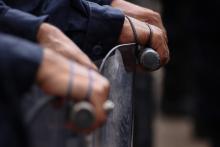
Close to 200 Japanese protesters gathered in Okinawa to stop construction trucks from entering Camp Schwab, a U.S. base, after the Ministry of Land overruled the local governor’s decision to revoke permission for construction plans. They criticized the "mainland-centric" Japanese government of compromising the environmental, health, and safety interests of the islanders.
Riot police poured out of buses at 6 a.m., outnumbering protesters four-to-one, and in less than an hour had cleared way for the construction vehicles.
Local officials have objected to the construction of the new coastal base, which will landfill 160 acres of Oura Bay and require a 205 hectare construction plan to develop a military runway.
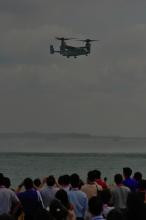
The U.S. Air Force plans to build six new helipads in the jungle as part of a deal to give close to one-half of the training center acreage back to Japan. Yet right in the middle of these proposed helipad sites lies Takae, a village of about 150 residents. They are the people who will suffer the increased air traffic that is sure to result if the helipads are built. They will also have to abide the possibility of a crash — there have been at least 43 aircraft accidents since 1972, and in 1959 a plane carrying two missiles crashed into a school, killing 17 people and injuring 210.
Now that the air force has a new toy, the MV-22 Osprey helicopter, there have been a lot of trainee pilots going out on practice runs. Unfortunately, the Osprey has established an abysmal safety record compared to earlier models. Its “safety” features are not, in fact, safe for potential bystanders.
Takae residents also believe that the U.S. military would like to use their village as part of its training exercises, an idea that doesn’t seem so farfetched after considering what happened during the Vietnam War. At that time, the U.S. military built a “dummy” village in the jungle and forcefully conscripted Takae residents, one as young as six years old, to wear black clothing and carry on as though they were living in a Vietcong stronghold. The conscripted residents were even required to stage mock attacks from the village.
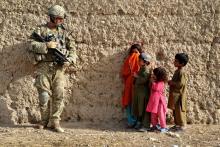
News agencies reported Saturday morning that weeks ago President Obama signed an order, kept secret until now, to authorize continuation of U.S. military operations in Afghanistan for at least another year. The order authorizes U.S. airstrikes “to support Afghan military operations in the country” and U.S. ground troops to continue normal operations, which is to say, to “occasionally accompany Afghan troops” on operations against the Taliban.
The administration, in its leak to the New York Times, affirmed that there had been “heated debate” between Pentagon advisers and others in Obama’s cabinet chiefly concerned not to lose soldiers in combat. Oil strategy isn't mentioned as having been debated and neither is further encirclement of China, but the most notable absence in the reporting was any mention of cabinet members’ concern for Afghan civilians affected by air strikes and ground troop operations, in a country already afflicted by nightmares of poverty and social breakdown.
While the concern for civilians may have been discussed even if not reported, it’s worth pointing out some of the suffering people on the ground continue to experience. Here are just three events, excerpted from an August 2014 Amnesty International report, which President Obama and his advisors should ha considered (and allowed into a public debate) before once more expanding the U.S. combat role in Afghanistan:

First, we had CIA Director David Petraeus being held over the fire for a possible affair with his biographer, Paula Broadwell. Then General John Allen, the top-ranking U.S. Commander in Afghanistan, drawn into the drama as allegations of indiscretions of his own with Jill Kelly (the credibility and severity of which remains to be determined), who also is linked to Ms. Broadwell and the related Petraeus drama. Then there’s rumor of FBI agents sending shirtless pictures of themselves to women and … anyway, you get the idea.
As if all of that wasn’t weird enough, now there’s the matter of Kevin Clash, inventor of and voice for Sesame Street’s Elmo, being accused by a young man of having an illicit relationship while the accuser was underage. The man has since recanted his claim, but not before Clash admitted to a consensual encounter with the accuser when he was of legal age, if just barely.
Why do they do it?

The United States has surpassed all records in global arms sales — a whopping $66.3 billion in armaments sold last year.
Most of the weapons went to Persian Gulf nations, although India also bought more than $4 billion in military equipment. U.S. arms sales in 2011 were triple the previous year’s level and the highest annual total ever recorded.
The U.S. is once again the world’s number-one arms proliferator, accounting for 75 percent of global arms sales. Word of this dubious distinction comes as our leaders claim to support and have been working at the United Nations to negotiate a global Arms Trade Treaty.
The report makes a mockery of the UN negotiations and our government’s presumed commitment to control the arms trade.

Last month, White House counter-terrorism adviser John Brennan acknowledged in a public speech at the Woodrow Wilson Center that the United States was using armed unmanned drones to kill alleged militants.
Brennan’s acknowledgement was the only “new” news.
Beginning in earnest under President George W. Bush and dramatically escalating under President Barack Obama, the United States is now using drones in four countries (Afghanistan, Pakistan, Yemen, and Somalia), and has used them in two others (Iraq and Libya). Going by the names Reaper and Predator, firing missiles named Hellfire, the drones are responsible for thousands of deaths, including hundreds of women and children.
Why drones?
There are three major reasons opponents of the unmanned death planes usually give. First, in fighting against terrorist and insurgent organizations, the United States has adopted a kill — not capture — strategy. With a “kill list” of targets, the attacks aim at known or suspected leaders.
Second, the attacks can be carried out with no danger to American troops. Remotely guided from distant locations, drones are a way of carrying out risk-free military operations. Third, with the attacks increasingly under the control of the CIA rather than the military, they can be conducted with a high degree of secrecy. Whom the drones targeted and killed, and how many civilians may have also been killed, is free of scrutiny.
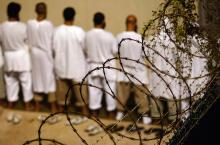
The anniversary of Osama bin Laden’s death at the hand of U.S. troops has reawakened the political controversy over the use of torture.
In an opinion piece today, Jose Rodriguez, Jr., former director of the CIA’s National Clandestine Service, says it wouldn’t have happened without torture. He writes of an al-Qaeda operative captured in 2004, who was “taken to a secret CIA prison – or ‘black site’ – where he was subjected to some ‘enhanced interrogation techniques.’”
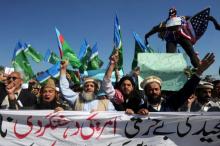
The Taliban is attempting to capitalize on the outbreak of violence that followed the inadvertent burning of a Quran by NATO troops by characterizing the war as a conflict between infidels and Islam, analysts said.
"It's tailor-made to their argument that the United States is trying to desecrate and destroy Islam," said Seth Jones, an analyst at Rand Corp. and author of In the Graveyard of Empires: America's War in Afghanistan. "It's patently untrue."
On Monday, a suicide car bomber launched an attack against the gates of a coalition base in Jalalabad, killing nine Afghans. The Taliban said the attack was revenge for the Quran burning, The Associated Press reported.
Over the weekend, two military advisers were found dead in their office at the Interior Ministry, a highly secure facility in Kabul. In response, NATO withdrew all its advisers from government ministries as Afghan police searched for a suspect in the killings.
The Quran burning threatens to undermine cooperation between Afghan and coalition forces, which is at the heart of the U.S. strategy to withdraw its troops and turn over security to Afghan forces, analysts said.

Since mid-November, the CIA had not launched a drone attack against Pakistan. On Sunday, the New York Times front page prominently featured a story headlined Lull in Strikes by U.S. Drones Aids Militants.
Quoting an array of administration officials, diplomats, intelligence analysts, and one “American government official with decades of experience in Pakistan;” the picture painted was one of a bolder al Qaeda, increased attacks on Pakistani security, and threatened strikes against U.S. troops in Afghanistan. It was a “sky is falling” account of the dire effects of no drones.
In my more cynical moments, I think such stories, almost entirely from anonymous sources, are a not-so-subtle way of applying political pressure. It’s one of the ways media and politics interact in Washington. And, sure enough, yesterday, the attacks resumed. Reuters reported that “missiles hit a home on the outskirts of the town of Miranshah in North Waziristan, killing at least four militants.” Recess is over, back to business.
